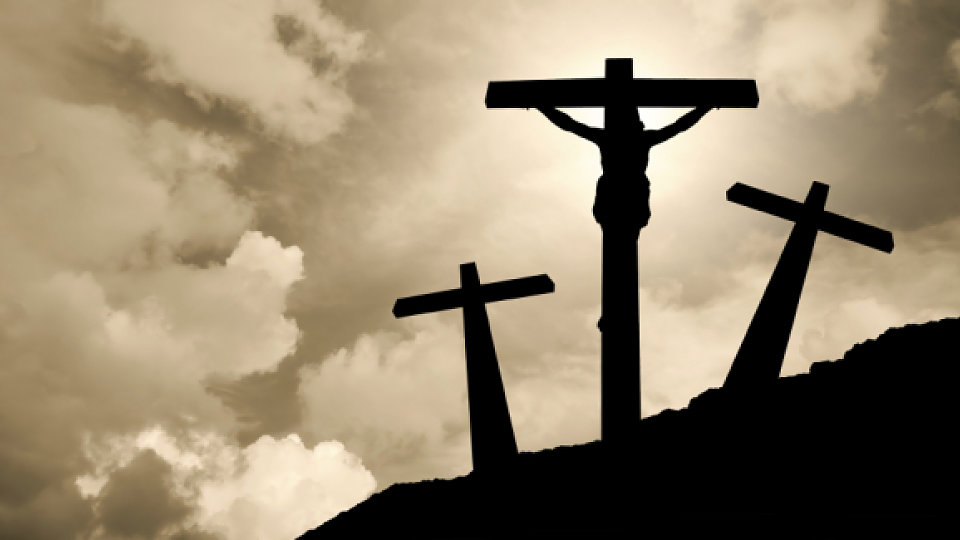A Crucified King

On Fridays during this season of Lent, I'm posting readings from The Way and its companion devotional. Today's post is an excerpt from The Way: Walking in the Footsteps of Jesus. Early on Friday morning, Jesus was taken to the Fortress Antonia, where he was brought before Pontius Pilate, the Roman governor of Judea and the guarantor of Roman justice. Though Pilate found no grounds for crucifying Jesus, his desire to please the Jewish leaders led him to sentence Jesus to death by crucifixion. The soldiers, wishing to make an example of anyone who claimed to be a messiah, stripped Jesus, mocked him, beat him, and placed a crown of thorns upon his brow. This was the only crown our King ever wore when he walked on this earth. Yet somehow, as we imagine his cruel coronation, we see its glory—a King suffering for his people, laying down his life to ransom them. After the soldiers had scourged and sought to dehumanize him, they led Jesus outside the city gates. The place of crucifixion was perhaps a half-mile from where his sentence was passed, and though his body had been abused, Jesus was forced to carry his cross to Calvary. When his body could no longer bear the 75-pound cross beam, a man named Simon of Cyrene was ordered by the Romans to carry Jesus’ cross the rest of the way to the place of crucifixion. The soldiers assembled the cross, then affixed a sign to the top indicating Jesus’ crime and mocking him: “Jesus of Nazareth, King of the Jews.” The soldiers laid Jesus on the cross and drove spikes through his wrists and ankles. They hoisted the cross into the air and settled its base into a hole so it would stand upright. There, still wearing the crown of thorns, Jesus hung for six hours, slowly dying. This is the kind of King we follow, a King whose standard is the cross. Many look at the cross and see Christ’s suffering and death for them, a “full and perfect sacrifice for the sins of the world,” and indeed this is one of the profound and powerful truths of the cross. But there is more. When I look at the cross, I see a divine love story centered on a God who suffered to save the human race. This love is selfless and sacrificial, a parent dying for a child, a lover dying for the beloved. Ultimately, the cross is a sign of the lengths to which God will go to save us from our sin and brokenness. It reminds us that forgiveness came at a great price. Luke includes the words Jesus prayed from the cross, words that I find utterly astounding, a prayer transcending space and time, offered on Calvary for all people everywhere: “Father, forgive them, for they do not know what they are doing” (23:34 NIV). When I look at the cross, I also see a mirror held up to our souls. Just as the story of Adam and Eve is archetypal—each of us hears the whisper of the serpent and at times succumbs—so too the story of the cross is our story. It is an indictment of the human race. We all like sheep have gone astray. Something in us is broken, and that brokenness was seen so clearly on the day when the religious leaders failed to see their own Messiah and instead insisted on his crucifixion. So when I look at the cross, it reminds me of all the things inside myself that I don’t like to admit are there, all the ways I’ve betrayed and denied Christ or hurt other people, all that is in need of redemption and grace. The cross leads me to gratitude and awe. It leads me to a love of Christ and a deep desire to follow him and live for him. I want to walk in his footsteps. I want to live as a citizen of his kingdom. I want to love as he loved. I want to practice his way. What kind of King is Jesus? He is a King who rode into Jerusalem on a donkey, was anointed by a prostitute, was crowned with thorns, and was enthroned when he hung on a cross, so that you and I might know the love and mercy of God, accept it, and follow him. Jesus’ way calls for authentic followers, not religious hypocrites. His is a way that requires compassion for the hungry and thirsty and naked. Jesus’ way is a path of servanthood and sacrificial love. And ultimately, walking in his footsteps will require us to “take up our cross” and follow him.